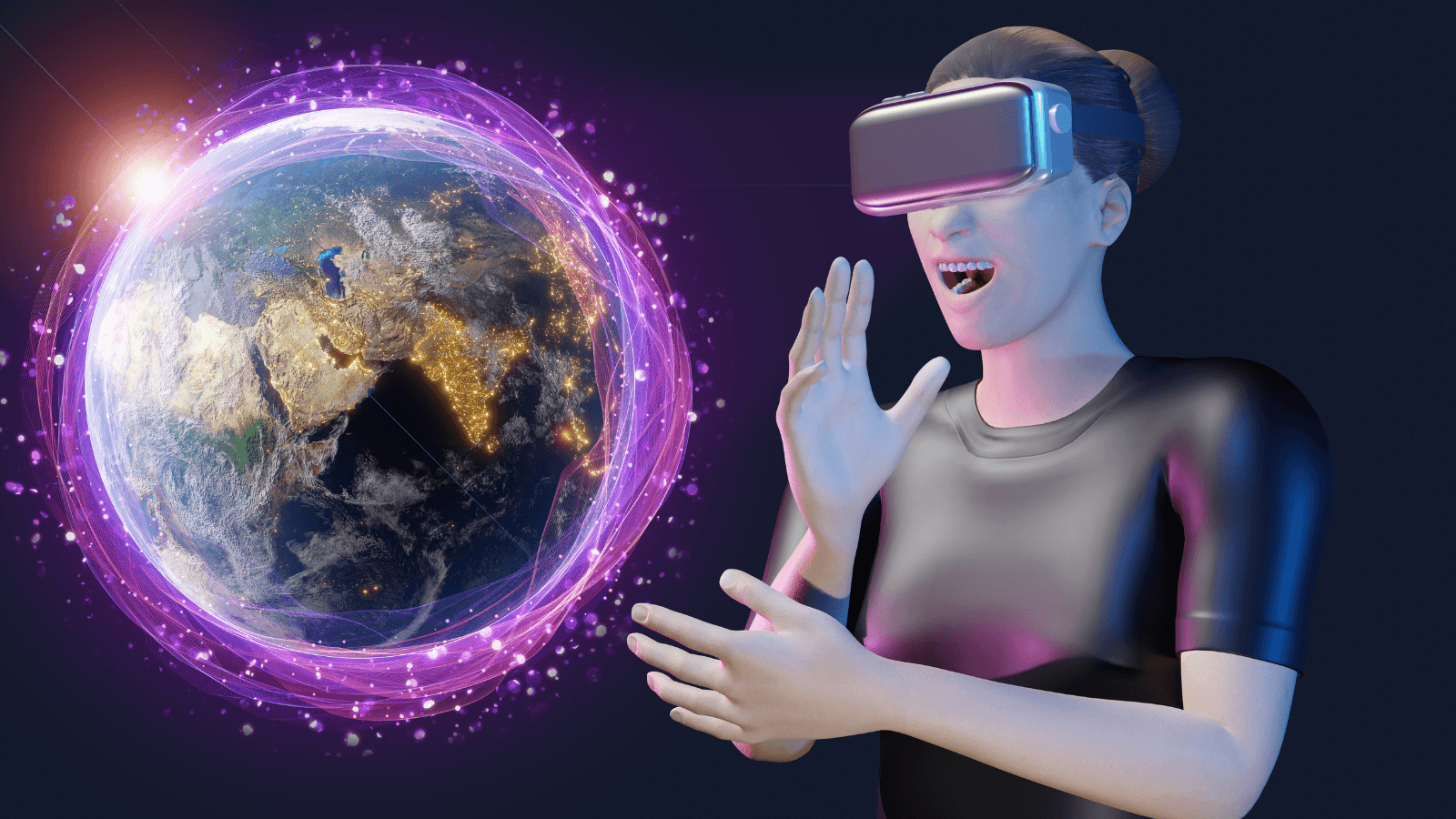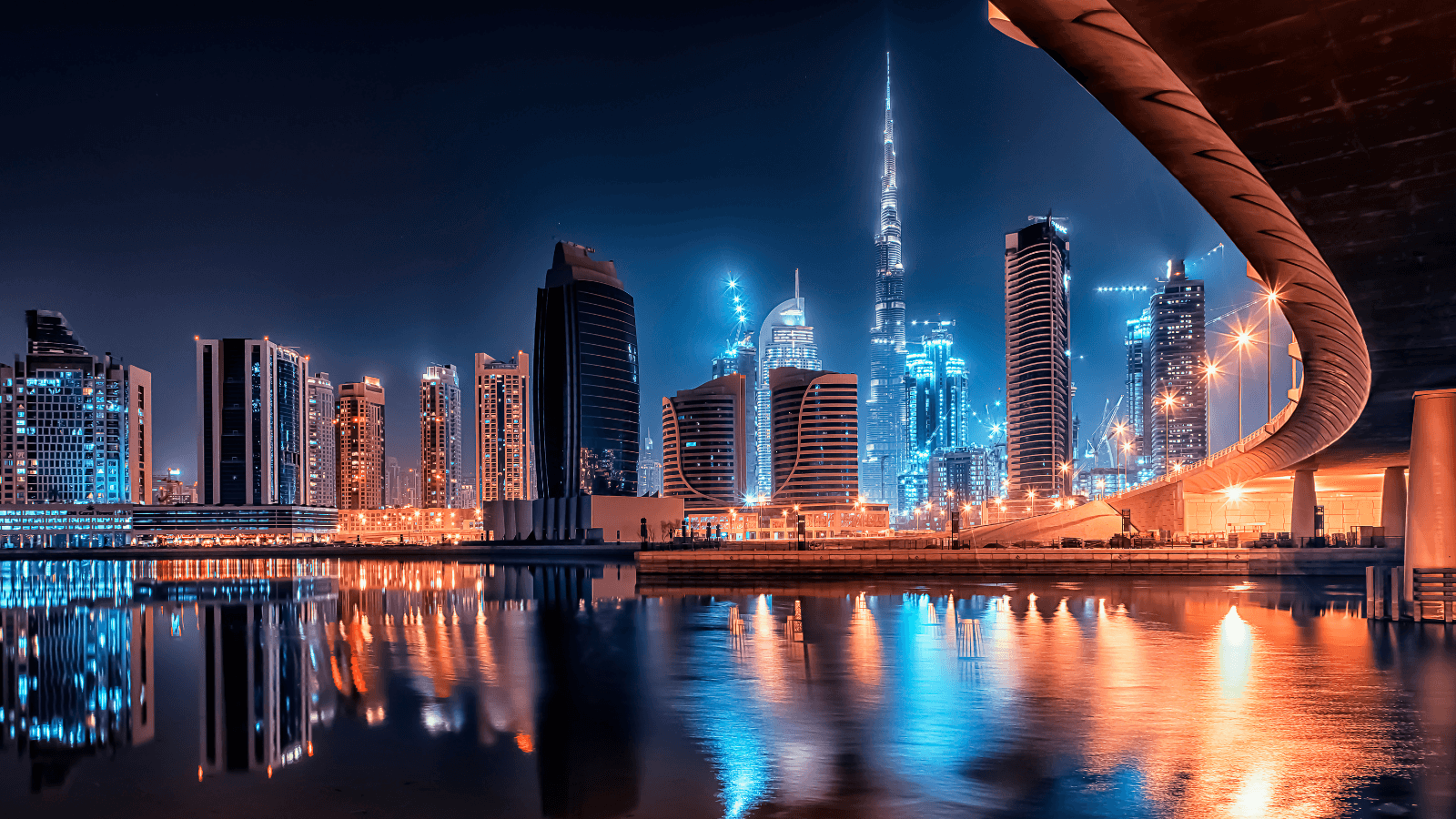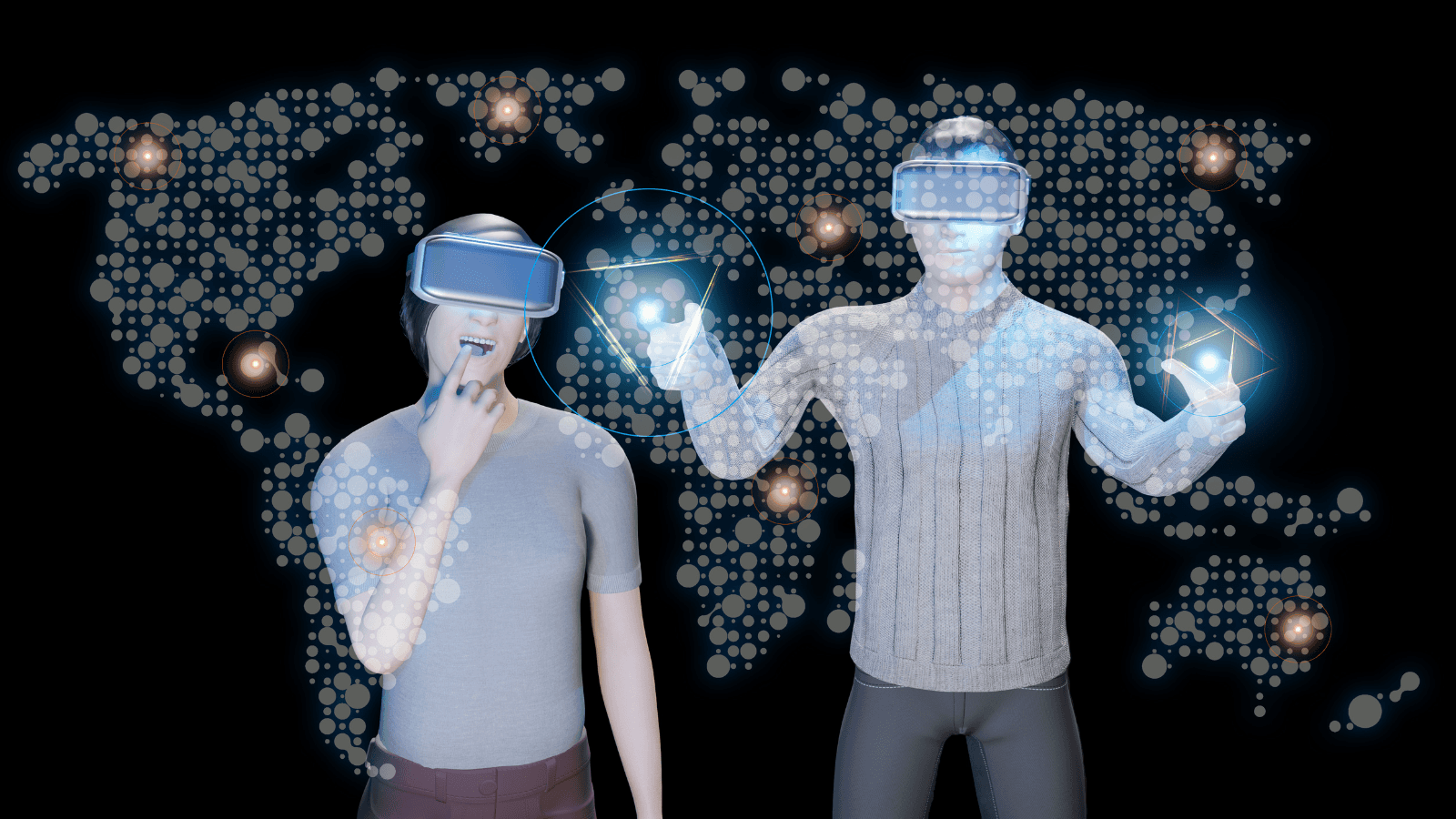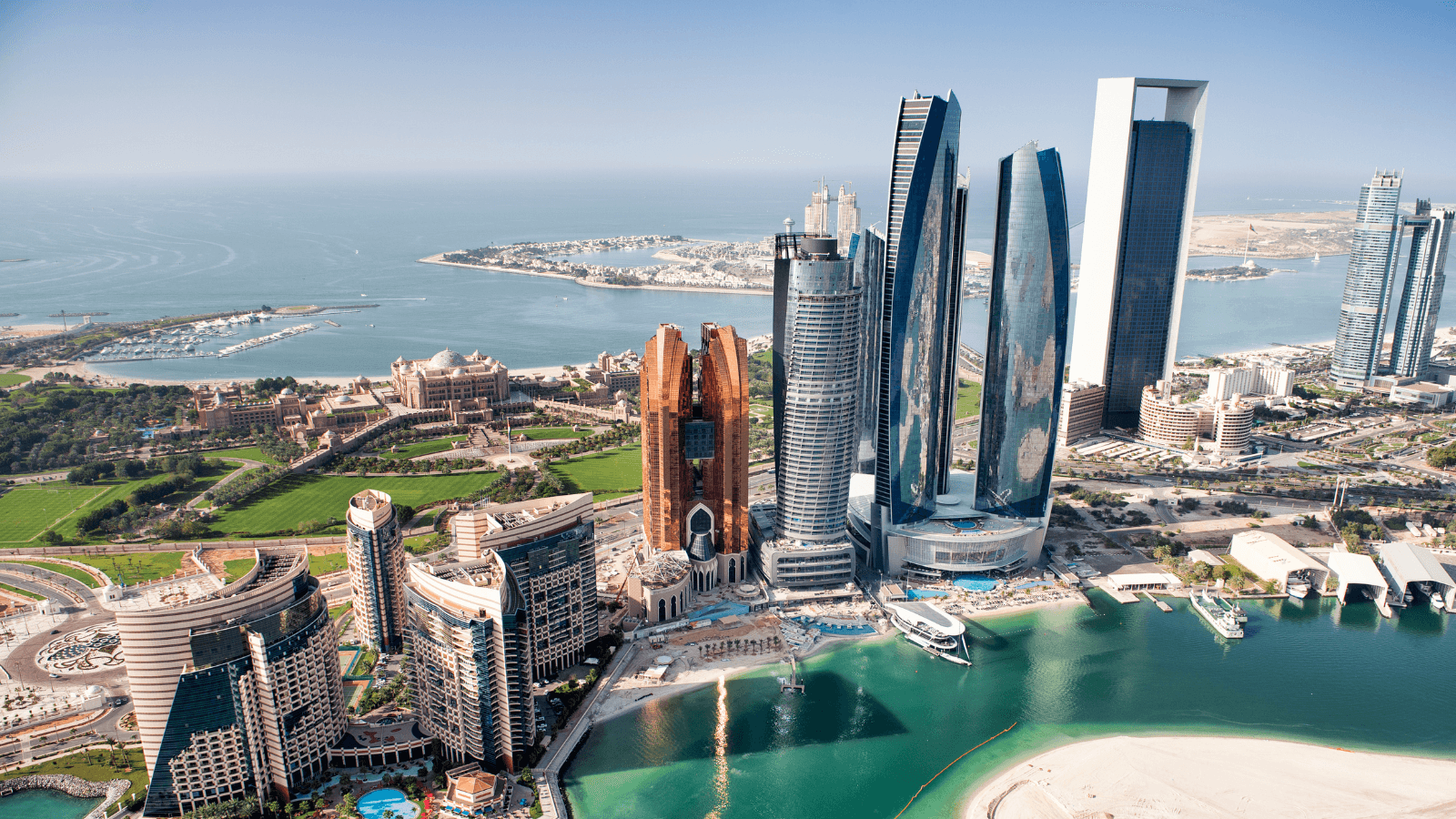Back to Blog
MENA's Journey Into the Immersive Digital Landscape
Aug 22, 2023
Callum Moates
As technology advances and global connectivity expands, the Middle East and North Africa (MENA) stand at the cusp of a digital revolution, poised to redefine its identity in the immersive digital landscape. This blog will explore the metaverse and digital twins and how they are transformational tools for MENA's urban development. The blog will also explain how the metaverse bridges the gap between physical and digital experiences allowing multiple stakeholders to design and build urban spaces collaboratively.
Understanding the metaverse and digital twins
The metaverse can be leveraged in urban planning to create a shared digital space to visualize and test urban development scenarios, encourage collaborative designing, and offer public engagement in a virtual setting. Digital twins of cityscapes and processes can be created in the metaverse by linking real-time data from sources like buildings, infrastructure, and roads to build their virtual 3D representations. Mathematical modeling and artificial intelligence support these digital replicas, which aid urban planners in simulating different scenarios, monitoring real-time conditions, and making informed decisions regarding development. Using digital twins in urban planning fosters better decision-making by providing a platform to test solutions virtually before real-world implementation, ensuring optimal resource allocation and proactive problem-solving.

The role of digital twins in MENA's urban transformation
The Middle East and North Africa (MENA) are rapidly developing urban spaces and neighborhoods across countries. In Dubai, the 2040 Urban Master Plan is set to transform five urban regions in less than twenty years. With such a scale of development, embracing digital twin technologies can assist in assessing the opportunities and risks of projects, which also facilitates discussions between civil society, governments, residents, and the private sector.
Here’s how some regions in MENA are leveraging digital twins:
Dubai
Dubai has been at the forefront of adopting digital twin technology. The emirate's ‘Smart Dubai’ initiative aims to make Dubai the world's most innovative and happiest city by leveraging technologies like artificial intelligence (AI) and the Internet of Things (IoT). For instance, the ‘Dubai Pulse Platform’ aggregates data from various city departments and provides real-time insights on urban projects. The Dubai Municipality’s ‘Dubai Here’ initiative offers 3D maps of real estate plots, landmarks, and infrastructure that can be accessed for better decision-making. One of the largest real estate developers in the UAE, Emaar Properties, has also created digital twins for several projects, including the Dubai Mall, Burj Khalifa, and Dubai Creek Harbor. These digital twins enable potential buyers to explore and visualize projects in detail before purchase.
Saudi Arabia
As part of Saudi Arabia's Vision 2030, the region is developing a digital twin to diversify its economy, improve public services, enhance residents' quality of life, and bolster urban planning efforts. As a part of the initiative, NEOM, Saudi Arabia's smart city project, will have a digital version in the metaverse called ‘XVRS’ that leverages virtual and augmented reality (VR and AR). NEOM aims to be a ‘cognitive city’ that deeply connects residents with their environment and also allowing stakeholders to plan the city’s construction before physical execution.
Here are some benefits of digital twins in urban planning:
Accurate modeling: Digital twins provide a precise and up-to-date representation of the city's infrastructure, utilities, and services through data collected by the Internet of Things (IoT) and by using AI. This accuracy allows urban planners to test various ‘what-if’ scenarios and predict the outcomes of decisions and situations like infrastructure or demographic changes.
Data-driven decision-making: City officials can make informed decisions with the vast amount of data collected and analyzed by digital twins. Whether it's about traffic management, energy consumption, or waste management, data-driven insights lead to more efficient and effective solutions.
Enhanced citizen engagement: Digital twins can also serve as platforms for citizens and residents to provide feedback, report issues, or access services through digital twin interfaces. This two-way communication ensures that urban planning is more inclusive and aligned with the community's needs.
Sustainability and resource management: Digital twins can simulate the impact of various urban planning decisions on the environment, which helps cities adopt more sustainable practices and manage their resources more efficiently. For instance, Siemens created a digital twin for its Munich headquarters, which led to a 90% reduction in energy consumption.
Cost savings: By simulating the outcomes of different scenarios, cities can avoid costly mistakes and invest in projects that offer the best return on investment.

Bridging the gap between physical and digital realities
Digital twins have emerged as a transformative technology in urban development by creating a dynamic, real-time replica of urban spaces that revolutionize how stakeholders collaborate and co-create solutions. Here's how digital twins bridge the gap between physical and digital realities in urban development:
Unified platform for stakeholders to simulate situations and collaborate: Digital twins offer a centralized platform for all stakeholders, ensuring everyone accesses the same data and insights. They also enable the testing of various scenarios in a risk-free environment. This feature is crucial for optimizing designs based on real-world conditions. For example, in January 2022, Las Vegas unveiled a digital twin of a 7-square-kilometer stretch of its downtown. This digital representation allowed stakeholders like urban planners, architects, developers, and government entities involved in the city's development and infrastructure planning to access a centralized platform to model multiple scenarios and improve city emissions, traffic, and emergency management.
Real-time feedback loop: Changes and issues with real-world urban development projects are instantly visible through digital twins, allowing for swift adjustments and ensuring stakeholder alignment. Data feedback loops are pivotal in creating a closed-loop digital twin (CLDT) to increase operational efficiency and improve design iteration progress. For example, if a wind turbine's digital twin detects a decrease in efficiency due to blade wear, it can instantly relay this information to the maintenance team. This real-time feedback ensures timely maintenance, prolonging the turbine's lifespan and ensuring optimal energy production.
3D visualization: Virtual representation of urban projects bring abstract concepts to life, helping stakeholders understand the scale, aesthetics, and impact of new developments. For instance, Singapore used a dynamic 3D city model that showed the region's vegetation, transportation networks, and infrastructure in detail, supported by real–time and static data to monitor construction progress in the city.

Economic opportunities and innovation
The metaverse, a collective virtual shared and interactive space, holds immense economic potential for the MENA region beyond urban planning. As the digital and physical worlds continue to merge, sectors like tourism, entertainment, and education in the MENA region are leveraging the metaverse to drive innovation, attract investment, and offer unique experiences.
Here’s how some sectors in MENA are using the metaverse:
Tourism
Virtual tourism experiences: With travel restrictions and the changing dynamics of global tourism, virtual tourism has gained traction. For instance, Egypt's ancient pyramids, Jordan's Petra, or the UAE's Louvre Abu Dhabi can be explored virtually, offering a 360-degree immersive experience to global audiences without leaving their homes.
Cultural heritage preservation: Virtual replicas of historical sites and artifacts can be created in the metaverse, ensuring they remain intact for future generations. For example, Saudi Arabia's AlUla, a UNESCO World Heritage site, has been digitally preserved through a 3D virtual replica, allowing users to explore its ancient tombs and structures in the metaverse.
Entertainment
The entertainment industry in the MENA region is beginning to explore virtual concerts, events, and theme parks that people from around the world can attend through their virtual avatars. These events allow attendees to benefit from costs, time saved, and reduced CO2 emissions, while for organizers, such events open up new revenue streams. The Expo Dubai Xplorer is an excellent example of a virtual event organized with a 360-degree walkthrough experience.
Education
Traditional learning can be complemented with metaverse platforms where students can take virtual field trips, interact with 3D models, or even attend lectures conducted by global experts in a virtual auditorium. For instance, using immersive tools like the metaverse, a student in Dubai can virtually visit a rainforest or the ruins of ancient Mesopotamia as part of their curriculum. For instance, companies like SweetRush are known for creating compelling, immersive learning experiences using VR, AR, AI, simulations, and interactive video to enhance education.
The metaverse can also foster a classroom environment whereby students from different parts of the MENA region or even the world can collaborate on projects, share insights, and learn from each other in a virtual space.

Conclusion
In conclusion, the MENA region's foray into the digital domain, powered by the 3D internet, IoT, and digital twins, is revolutionizing urban planning, entertainment, tourism, and education industries. The convergence of digital twins and the metaverse, particularly in the urban development and management sector, enhances efficiency by creating real-world simulations of projects, facilitating data-driven decision-making, and encouraging citizen engagement. The metaverse also transforms stakeholder collaboration to co-design and co-create real estate and infrastructure projects. These advancements are not merely about digitization but fundamentally reshaping industries, making them more agile, efficient, and forward-thinking.
Are you an organization or government body looking to enhance your operations through digitalization? We can help you build, scale, and monetize your project in the metaverse. Get in touch with us!
Aug 22, 2023
Callum Moates
Subscribe to our monthly newsletter
About Landvault
Landvault is building infrastructure to accelerate the metaverse economy, by building tools to create, deploy and monetize content. The company has helped over 200 clients enter the metaverse, including both Fortune 500 companies and government organizations like the Abu Dhabi government, Mastercard, L’Oreal, Red Bull, and Heineken. The company has raised a total of $40m over the past three years and continues to pioneer technological advancements.
